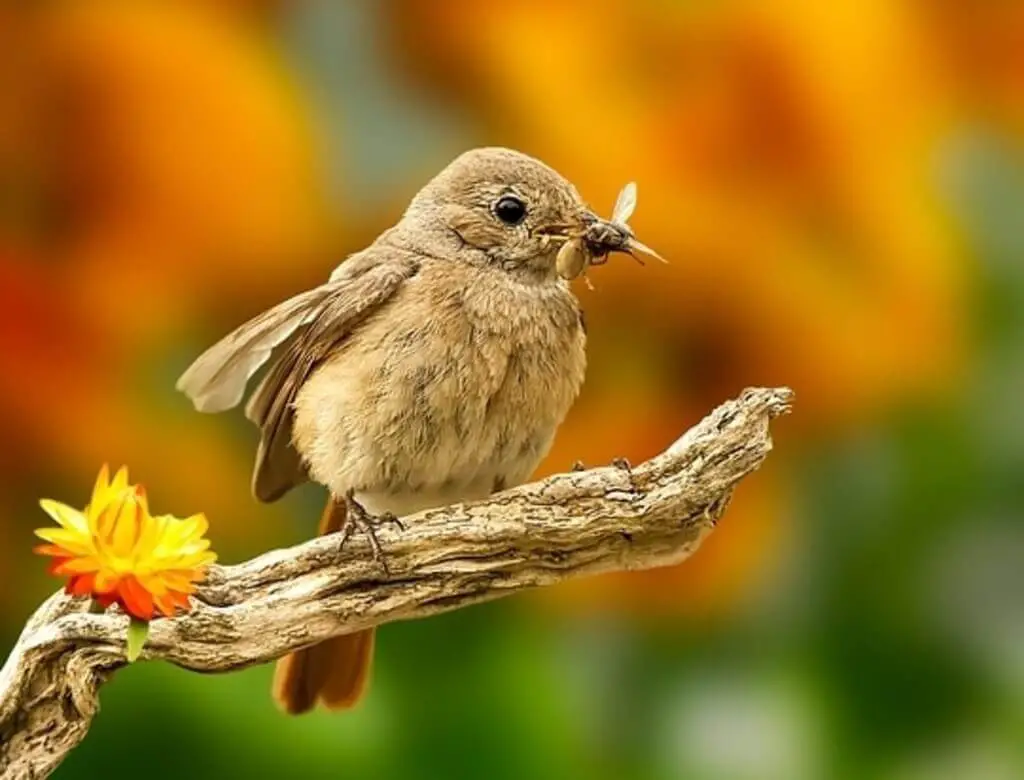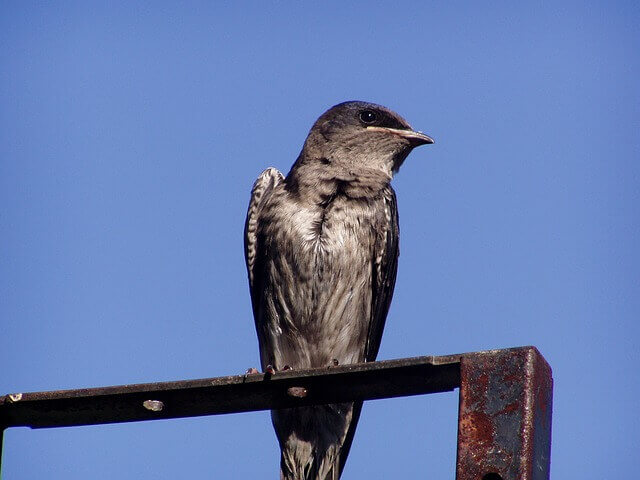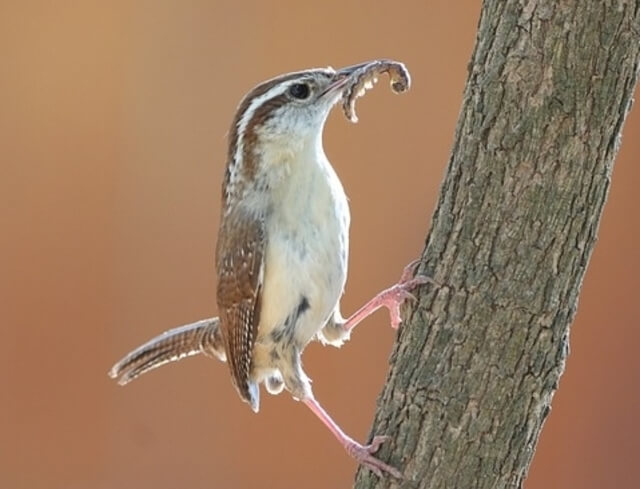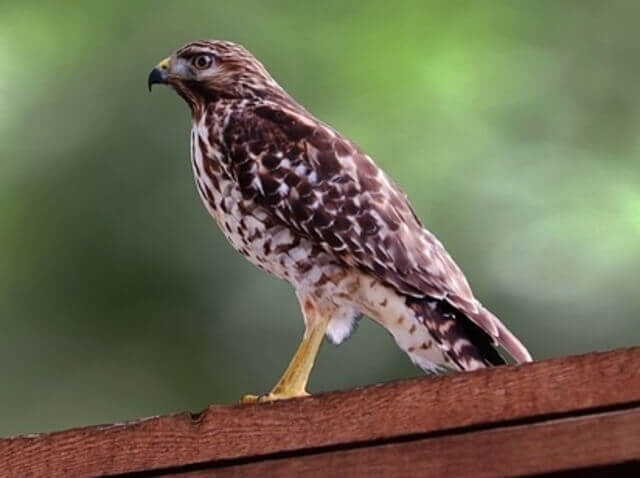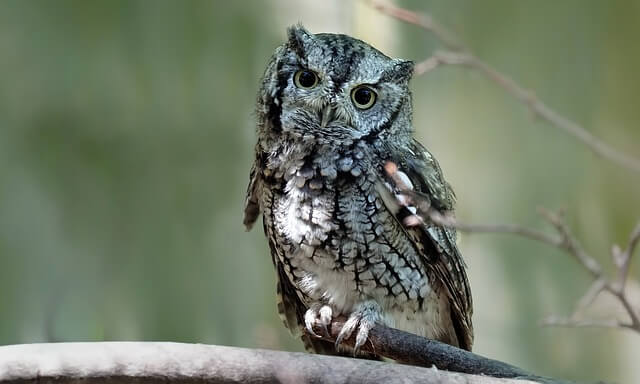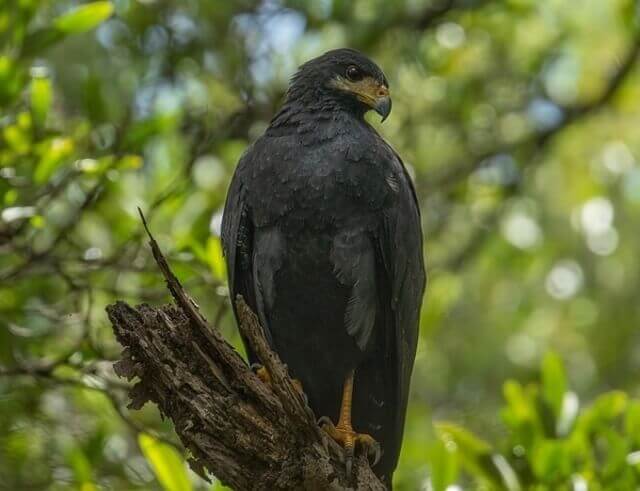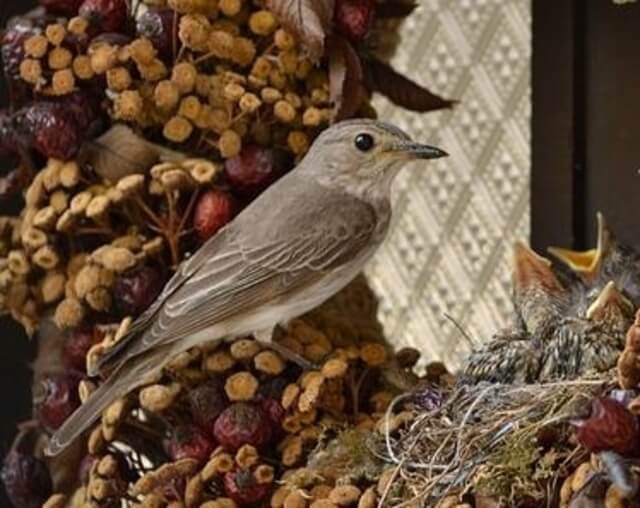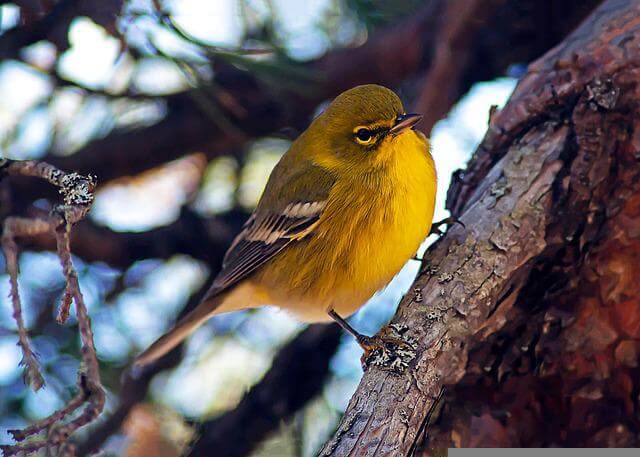Many gardeners are looking for a way to naturally keep their plants safe from pests. One of the best ways is by attracting insectivorous birds in your garden.
Here are 31 birds that eat insects that will help you achieve this goal! Insectivorous birds are an environmentally friendly solution to bugs and pest control because they eat insects, spiders, worms, centipedes and more.
Table of Contents
- 1 Types of Birds That Eat Insects
- 1.1 American Dipper
- 1.2 Purple Martin
- 1.3 Carolina Wren
- 1.4 Black-capped Chickadee
- 1.5 White-breasted Nuthatch
- 1.6 Scarlet Tanager
- 1.7 American Goldfinch
- 1.8 House Finch
- 1.9 Ruby-throated Hummingbird
- 1.10 Swainson’s Hawk
- 1.11 Broad-winged Hawk
- 1.12 Red-tailed Hawk
- 1.13 Rough-legged Hawk
- 1.14 Harris’s Hawk
- 1.15 Scops Owl
- 1.16 Screech Owl
- 1.17 Barn Swallow
- 1.18 American Kestrel
- 1.19 Common Kingfisher
- 1.20 Pileated Woodpecker
- 1.21 Black Drongo
- 1.22 Tree Creeper
- 1.23 Common Black-hawk
- 1.24 Corn Bunting
- 1.25 Eastern Bluebird
- 1.26 Eastern Kingbird
- 1.27 Northern Mockingbird
- 1.28 Grasshopper Sparrow
- 1.29 Eurasian Reed Warbler
- 1.30 Greater Roadrunner
- 1.31 Acorn Woodpecker
- 2 Types of Birds That Eat Flying Insects
- 3 How Insect-Eating Birds Benefit Ecosystems?
- 4 Migration Patterns of Insect-Eating Birds
- 5 How to Attract Bug-Loving Birds?
- 6 Adaptations for Insect-Eating Birds
- 7 Author
Types of Birds That Eat Insects
American Dipper
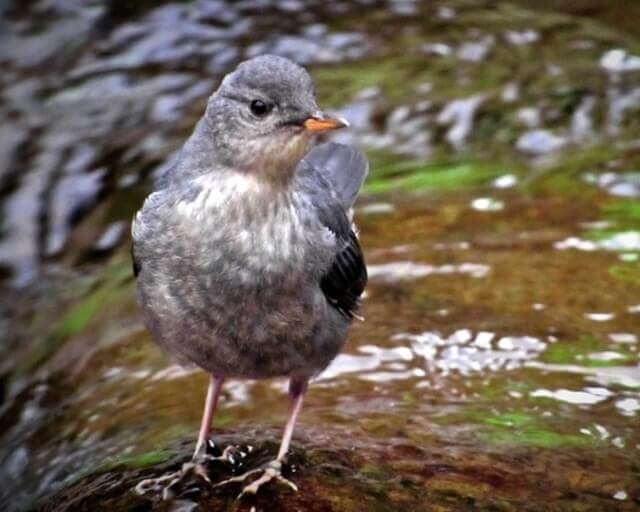
The American dipper is a small waterbird that ranges throughout much of North America. The dipper is a common visitor to parks and gardens, and can be found in many habitats, including forests, meadows, and wetlands.
The diet of the dipper includes insects, water insects, and other small creatures. The dipper breeds in cold water ponds and rivers, constructing a nest of sticks and mud on the bottom.
Purple Martin
The Purple Martin is a small bird that ranges throughout the eastern and central United States. The Purple Martin is a migratory bird, so it will move around based on food and water availability.
The Purple Martin prefers to live in areas with trees and other vegetation, but will also inhabit open areas. The Purple Martin feeds primarily on insects, but will also eat fruit occasionally. The Purple Martin nests in trees, and typically has three to six eggs.
Carolina Wren
The Carolina Wren is a small, sprightly bird found throughout the eastern United States. The range of this bird extends from Pennsylvania to Texas, although the wild population is thought to be declining. It is a common bird in wooded areas and gardens.
The Carolina Wren is a cavity nester, preferring abandoned houses and other large, natural openings in trees. The diet of this bird includes insects, seeds, and fruit.
Black-capped Chickadee

The Black-capped Chickadee is a common bird found throughout North America. It ranges from southern Canada to the Gulf of Mexico, and from the eastern seaboard of the United States to western Panama.
The Chickadee is a migratory bird, and it nests in a variety of locations, including in trees, on cliffs, or in abandoned buildings. The chickadee is mostly insectivorous, but will also eat small fruits and berries.
White-breasted Nuthatch

The White-breasted Nuthatch (Sitta carolinensis) is a common but little known nuthatch in the eastern United States. It ranges from New England south to the Florida Keys, west to Oklahoma and Texas, and north to central Manitoba.
The nuthatch is mainly a forest bird, but it also inhabits brushy open woodlands and orchards. It feeds on insects, nuts, seeds and fruit.
Scarlet Tanager
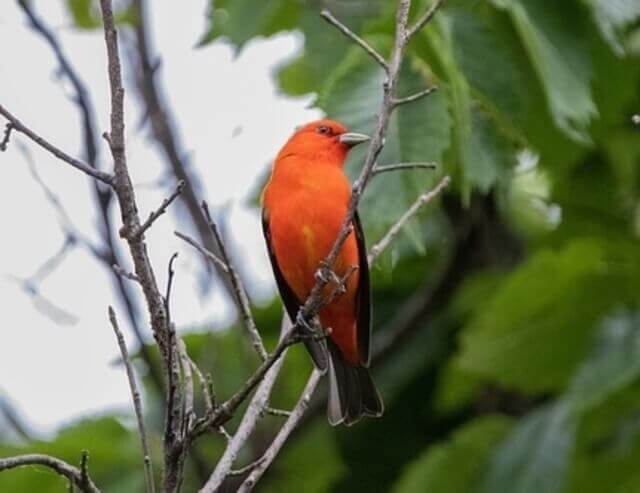
The Scarlet Tanager is a small, crimson red bird with black wings, that can be found in a range of habitats across North America. They are commonly seen in open areas such as forests and edge habitats, but are also common in urban areas.
The Scarlet Tanager’s diet consists mainly of insects, but they will also eat small birds and other small animals. They often build their nests on the ground near water, but they have been known to nest in high trees as well.
American Goldfinch
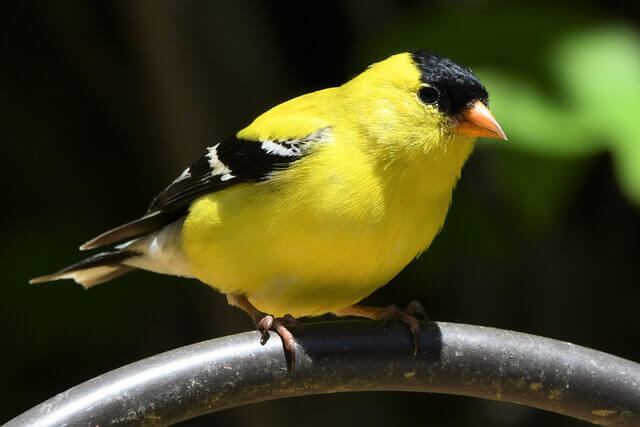
The American Goldfinch is a small bird native to North America. They are found in the eastern and central United States, as well as in Canada. They are also found in parts of Mexico. The American Goldfinches range includes a large area of both open and forested land.
The birds are common around human habitation, but they also inhabit areas where there is plenty of food. They eat a variety of things including seeds, insects, and other small animals.
House Finch

The House Finch is a small passerine bird that ranges across much of North America. It is found in a variety of habitats, including open country, urban areas, and suburban gardens.
The house finch is a feeder bird, and its diet consists mainly of seeds but also insects such as aphids. It breeds in both cold and warm climates, and builds a cup-shaped nest from shredded wood, leaves, and other materials.
Ruby-throated Hummingbird
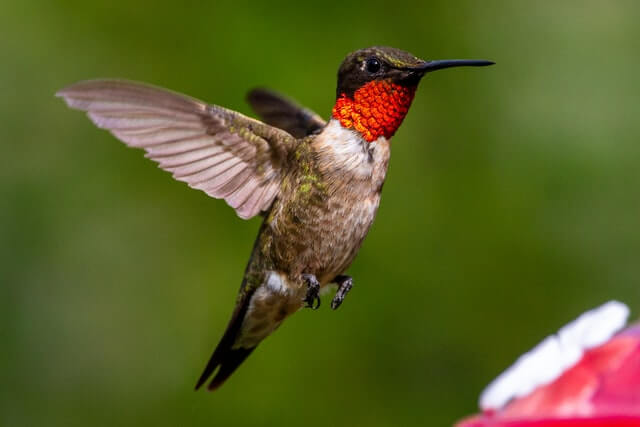
The Ruby-throated Hummingbird ranges from southeastern Canada and through most of the United States, including all of Florida, to Northern Argentina.
It is found in wooded areas with a lot of flowers, such as gardens, orchards and natural parks. The Ruby-throated Hummingbird construct their nest in a crotch in a tree or other suitable location. It feeds on insects and nectar.
Swainson’s Hawk
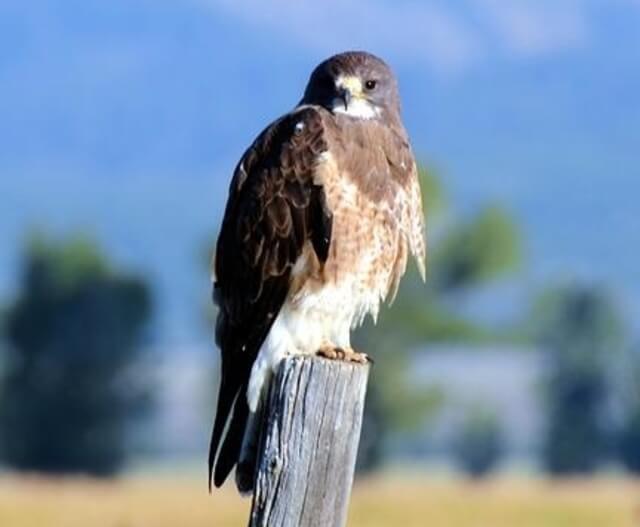
The Swainson’s Hawk is a medium-sized raptor that ranges throughout most of North America. The Swainson’s hawk is found in the eastern half of the United States, as well as in parts of Canada and Mexico.
The Swainson’s Hawk is an opportunistic hunter that feeds primarily on insects, small mammals, birds, vertebrates including reptiles and amphibians. This bird has a wide range and can be found in many habitats, from dense forests to open prairies.
Broad-winged Hawk
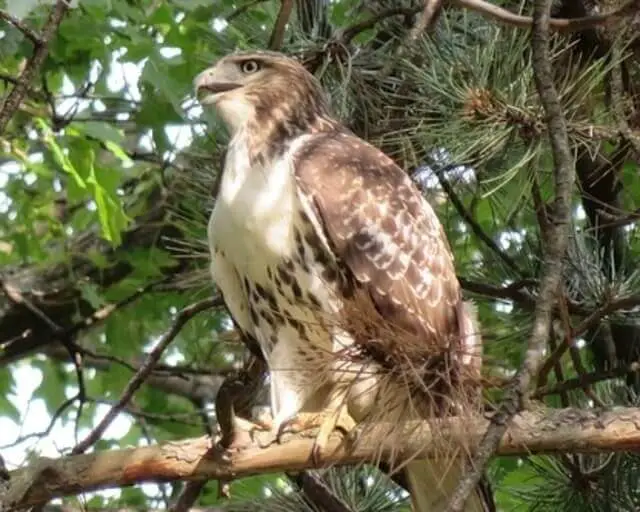
The Broad-winged Hawk is a medium-sized hawk that is found throughout the United States and parts of Canada. It is the most common hawk in North America, with an estimated population of around 1,000,000.
The Broad-winged Hawk is a raptor that is primarily a scavenger, eating carrion and other dead animals. It also hunts small animals, but its primary food source are rodents, chipmunks, shrews, and they also feed on lizards, snakes, crabs, insects.
Red-tailed Hawk
The Red-tailed Hawk is the most widely distributed hawk in North America. It ranges from coastal California to the Great Lakes, east to the Atlantic coast, and south to central Florida. There are also populations in Mexico and Central America.
The Red-tailed hawk is found in open habitats with plenty of trees and open spaces for soaring. It feeds on small animals, such as rodents, birds, and rabbits, as well as reptiles such as snakes, lizards, and occasionally insects.
Rough-legged Hawk
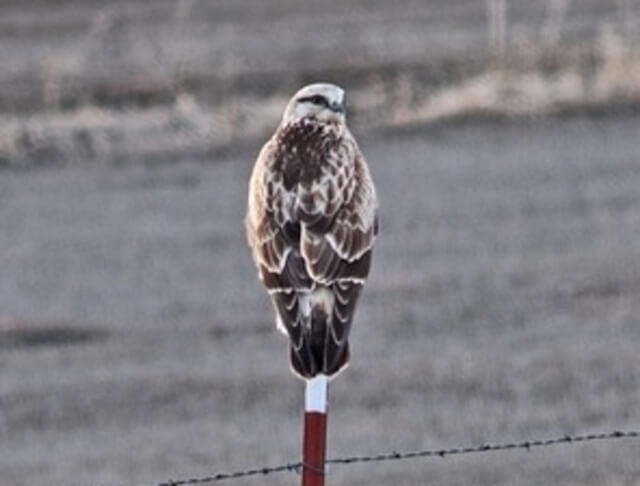
The Rough-legged Hawk ranges throughout most of North America, from the Arctic tundra to the Sonoran Desert. It is found in wooded areas and open fields, and is a common visitor to bird feeders.
The Rough-legged Hawk is an opportunistic predator that feeds on small prey such as rodents, frogs, and birds, but will also eat insects.
Harris’s Hawk
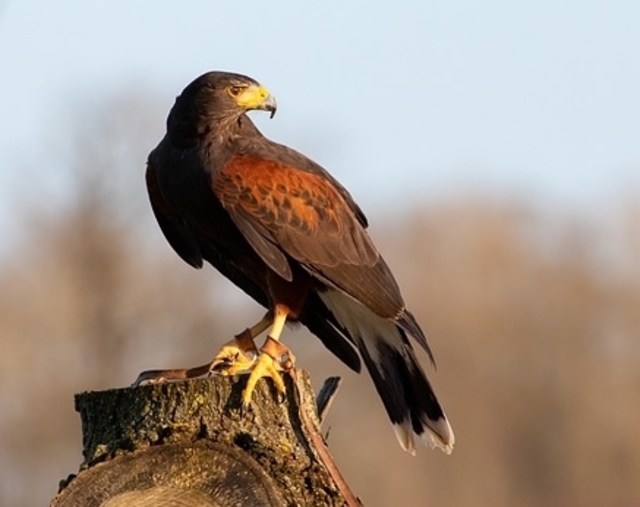
The Harris’s hawk range extends from central Texas to the Gulf of Mexico and includes most of Alabama, Georgia, Mississippi, and Louisiana.
The hawks are found in open country with plenty of areas to hunt and perch such as prairies, oak-hickory forests, and thorny briers. They are opportunistic feeders that consume a variety of small mammals, birds, reptiles, amphibians, and insects.
Scops Owl

The Scops Owl is a large owl that ranges throughout much of North America. They are noted for their distinctive ears and facial features, and typically inhabit open areas such as prairies, meadows, and open woodland.
The scops owl is primarily a nocturnal bird, but will also hunt during the day. The owl feeds mainly on small mammals, but can also consume birds, reptiles, amphibians, and insects.
Screech Owl
The Screech Owl is the smallest owl in North America and is found in the western United States and Canada. The screech owl is a nocturnal bird that prefers to live in open spaces, such as woodlands and deserts.
The screech owl has a small range and is not considered endangered, but its habitat is in decline due to development. The screech owl feeds on small animals, such as rodents and birds, and sometimes eats carrion and large insects.
Barn Swallow
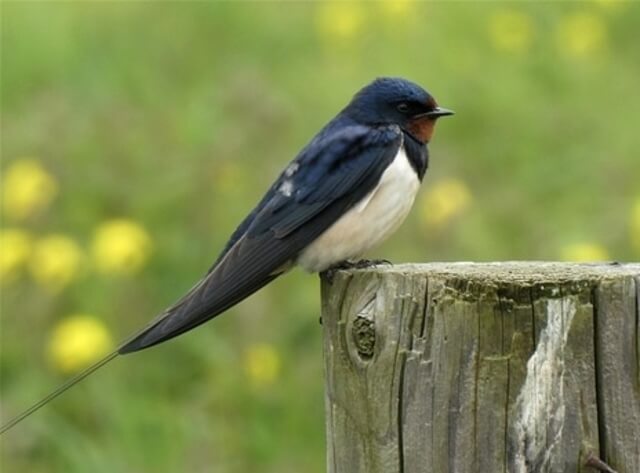
The Barn Swallow is a common sight in most parts of the world, found in both rural and urban areas. The Barn Swallow is a migratory bird, spending the winter in southern countries such as Argentina, Brazil, and Paraguay and the summer in Northern Europe and Asia.
They are widespread but considered rare in North America. These birds are omnivorous, eating insects, small rodents, and other small animals. They often perch on high points to watch for prey.
American Kestrel
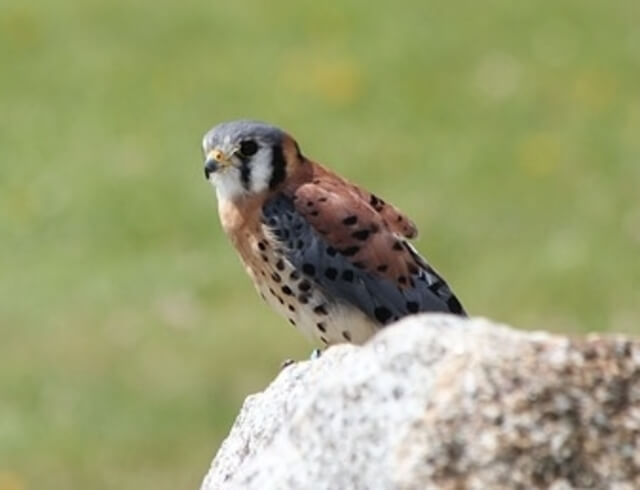
The American Kestrel is a small, falcon-like bird that ranges throughout most of North America. It is found in open country, including farmland and forests, and occasionally occupies urban areas.
It is a very common bird in urban areas and can be found nesting in any type of location, from large trees to the roofs of buildings. The American Kestrel is a dietary specialist, feeding mainly on small rodents and birds, but also consuming insects.
Common Kingfisher
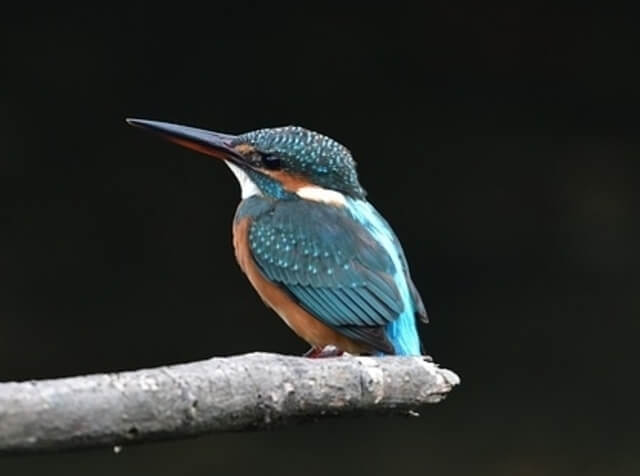
The Common Kingfisher is a migratory bird that resides in tropical and temperate regions around the world. It is usually found near water and hunts for small prey.
The common kingfisher has a wide range and can be found in many habitats, such as forests, wetlands, and rivers, andis a common sight in coastal areas, and it often nests near water.Its diet consists of small animals, such as insects, fish, and small amphibians.
Pileated Woodpecker
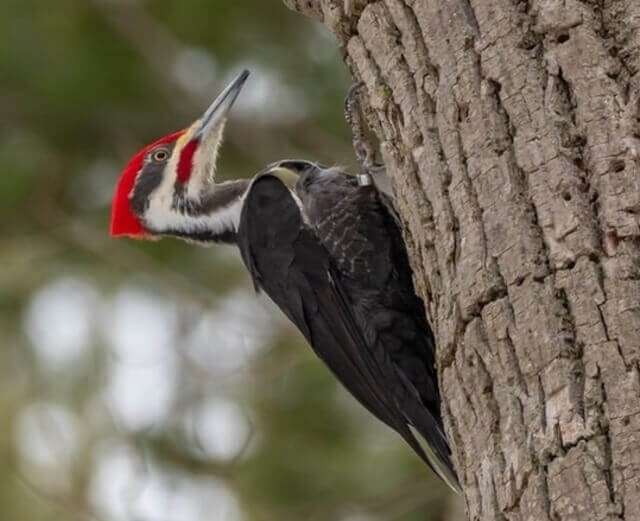
The Pileated Woodpecker is a large woodpecker found in the southeastern United States. The Pileated woodpecker is the largest species of woodpecker, with a length of40 to 50 cm (16 to 19.7″ in) and a wingspan of 65 to 75 cm (25.6 to 30″ in).
They are mostly black, but have white markings on their heads, backs, and wings. The Pileated woodpecker feeds primarily on hardwood trees, though they will also eat insects.
Black Drongo
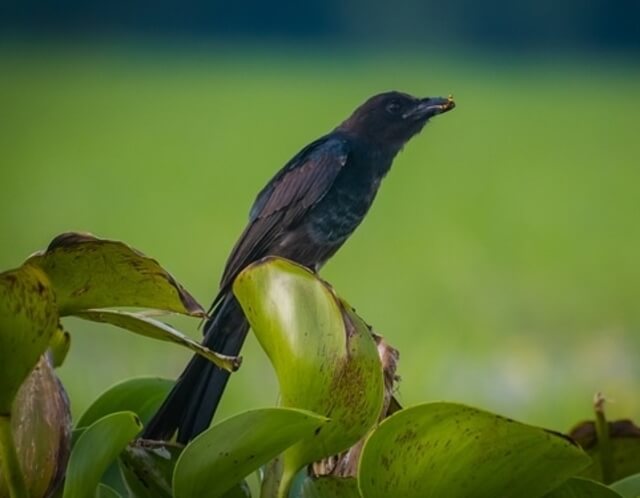
The Black Drongo is a small bird found in open woodland and forest. It is generally a shy species, but will feed mainly on insects, but also small mammals, reptiles and ocassionally fruit. The range of the Black Drongo is mainly in Southeast Asia but also occurs in parts of South Asia, Central Asia and China.
There are seven subspecies which differ slightly in plumage, size and diet. The Black Drongo is usually monogamous but can form pairs during the breeding season.
Tree Creeper
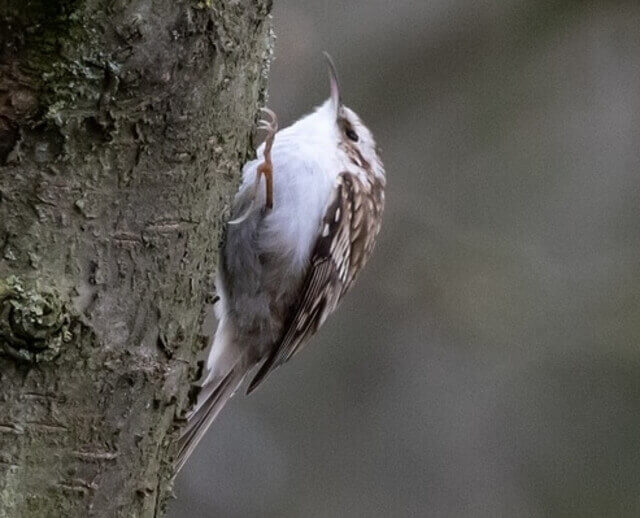
The Tree Creeper is a small, bird-like creature found in North America. It has a wide range that includes most of the United States and Canada as well as parts of Mexico.
The Tree Creeper’s habitat varies depending on the region it resides in, but it typically inhabits forests, woods and other wooded areas. The Tree Creeper is insectivorous, and feeds only on insects.
Common Black-hawk
The Common Black-hawk, also known as the hawk, is a medium-sized raptor that ranges across much of North America. The hawk’s preferred habitat is open areas with plenty of trees and vegetation, but it can be found in urban settings as well.
The hawk diet consists mainly of small mammals such as mice, rats and squirrels, but it will also feed on other birds, reptiles and insects.
Corn Bunting
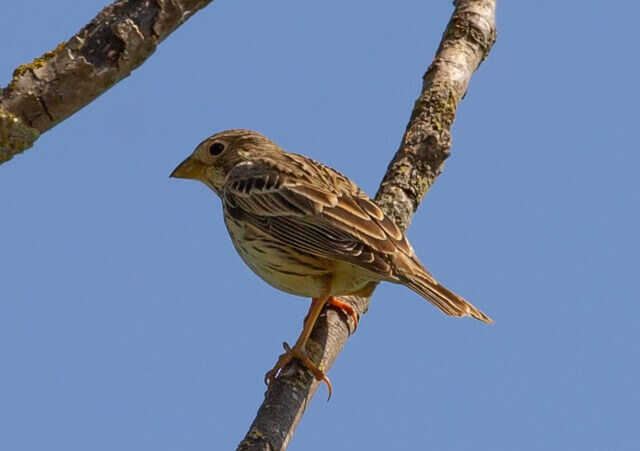
The Corn Buntings are a small passerine bird that ranges throughout much of North America. They favor open habitats with plenty of grasses and insects to eat. These birds are usually seen in flocks and are very active during the day.
They forage on the ground or in low trees, sometimes hovering to snatch insects from the air. This species is mostly seed-eating, but will also consume small creatures such as lizards or spiders.
Eastern Bluebird
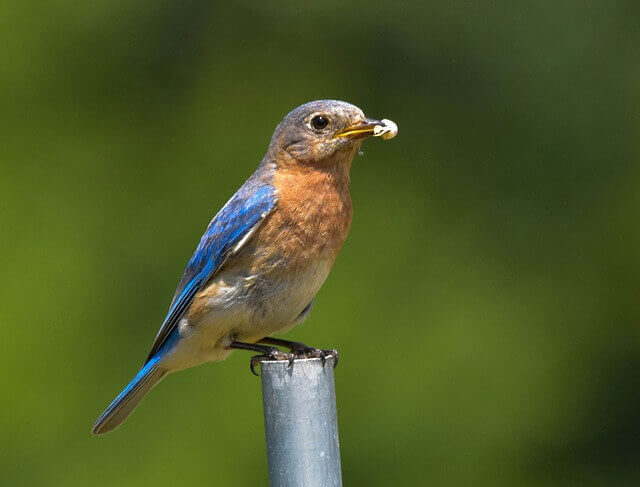
The Eastern Bluebird is a common bird found throughout the eastern half of North America. It ranges from Florida to Maine,south to Virginia and west to Oklahoma.
They can be found in a variety of habitats, including deciduous and mixed forests, suburban areas and even urban parks. The Eastern Bluebird feeds mostly on insects, but will also eat small spiders and other creatures.
Eastern Kingbird
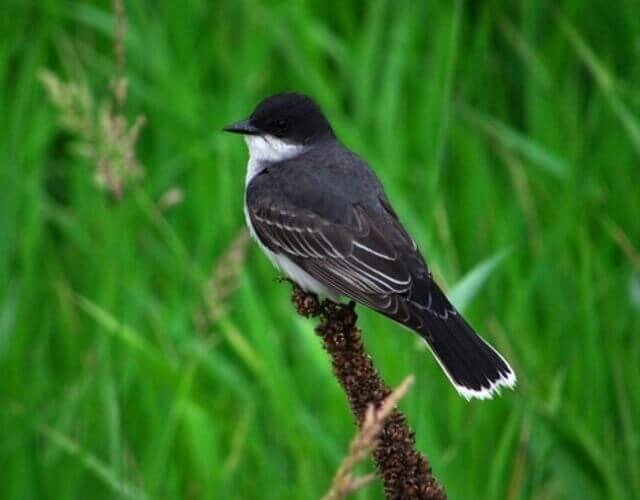
The Eastern Kingbird is a small bird that lives in the eastern United States. It has a range that includes parts of Illinois, Indiana, Kentucky, Maryland, North Carolina, Ohio, Pennsylvania, Virginia and West Virginia.
The Eastern Kingbird’s habitat includes open areas with many trees and shrubs such as fields, roadsides, orchards, and woodlands. Its diet includes insects.
Northern Mockingbird

The Northern Mockingbird is a medium-sized, gray and white bird that ranges throughout much of North America, South America and some Caribbean islands. It occupies a wide range of habitats, from open areas near water to dense forests.
The main diet of the Northern Mockingbird consists of insects, which it captures by flying close to them and then striking out with its wings opened very wide, but they are also known to eat fruit.
Grasshopper Sparrow

The Grasshopper Sparrow is a migratory bird that can be found in North America, Mexico and Central America. It has a distribution range which includes the eastern deciduous and oak woods of the United States as well as the boreal forests of Canada.
The main habitat for this bird is wooded areas with plenty of insects such as grasshoppers to eat. The Grasshopper Sparrow’s diet consists mainly of insects, but it will also consume small amounts of seeds.
Eurasian Reed Warbler
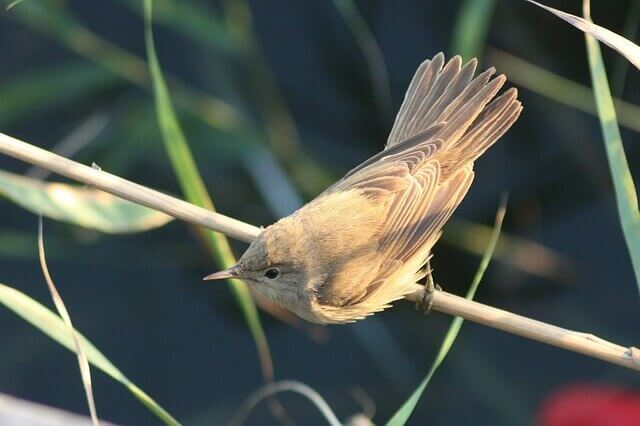
The Eurasian Reed Warbler has a distribution range that spans across much of Europe and Asia. This species prefers areas with dense vegetation, such as riparian corridors and woodland edges.
The main habitat for the Eurasian Reed Warbler is deciduous and mixed forests. This bird primarily eats insects, but will also consume other small invertebrates.
Greater Roadrunner
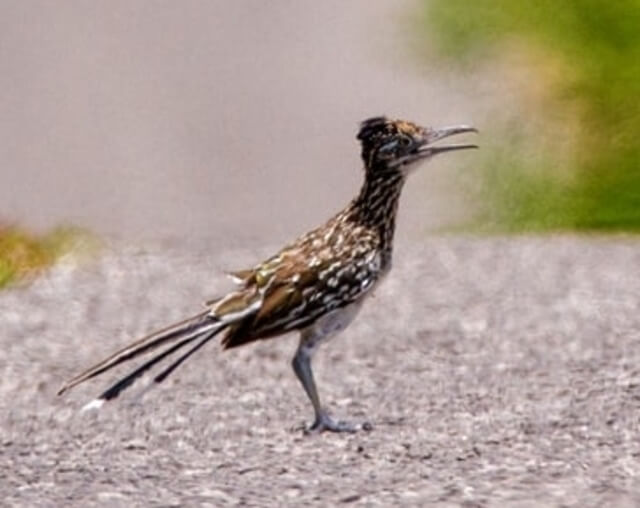
The Greater Roadrunner, Geococcyx californianus, is a ground-nesting bird that ranges from southern Arizona to northwestern Mexico.
The Greater Roadrunner is generally found in open country with scattered trees and bushes, but it can also be found near urban areas. The Greater Roadrunner eats insects, small animals and seeds.
Acorn Woodpecker
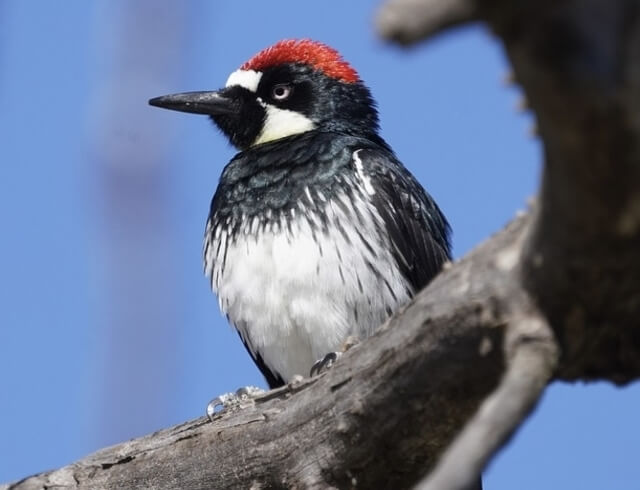
The Acorn Woodpecker is a small woodpecker found throughout most of North America. It occupies a wide range, from the far north down to central Mexico, and has been reported from every state except Rhode Island.
The Acorn Woodpecker’s main habitat is hardwood and mixed forests, but it can also be found in deciduous woods. They are primarily insectivorous, consuming insects such as ants, termites, bees and wasps.
Types of Birds That Eat Flying Insects
Swallows
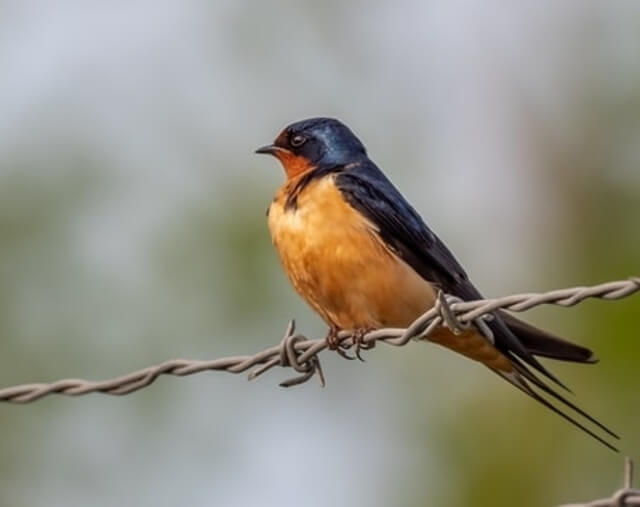
The swallow is a bird that is known for its aerial acrobatics. These birds are able to catch insects in flight and can reach speeds of up to 40 miles per hour. Swallows have long, slender wings and a forked tail that helps them maneuver through the air.
They also have keen eyesight that allows them to spot their prey from great distances. Swallows typically eat insects, but they will also eat spiders, worms, and small reptiles.
Swifts

The swift is one of the most interesting birds in the world. They can fly very fast, and they catch insects in flight. Swifts spend most of their lives in the air, and they only land to breed. They build their nests out of twigs and grasses, and they lay their eggs on a ledge or in a hole. Swifts are very social birds, and they often form colonies.
They feed on insects and spiders, which they catch in midair. Swifts have sharp claws that help them grip onto prey. Furthermore, their sense of smell helps them locate sustenance. Swifts can live for up to 20 years.
Nighthawks
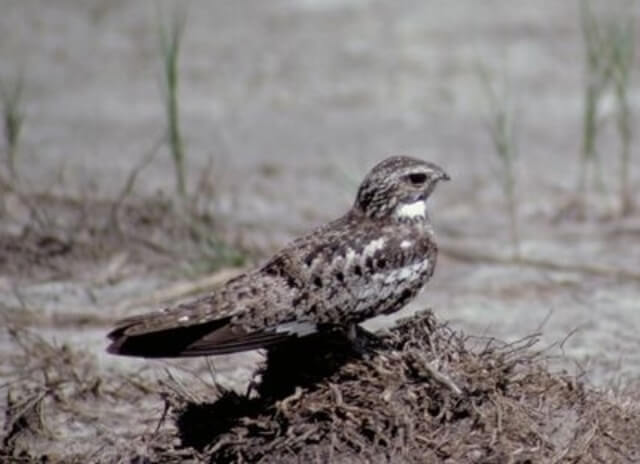
Nighthawks are aerial insectivores that feed predominately on moths. They are named for their habit of feeding at night, when most other birds are inactive. Nighthawks are characterized by their long, pointed wings and wide mouths. They catch insects in flight by swooping down from a perch and grabbing them out of the air. Nighthawks typically forage in open areas near woods or water.
They can be seen perched on telephone poles, fence posts, or tree limbs, where they scan the ground for prey. When they spot an insect, they fly down to snatch it out of the air. Nighthawks have excellent vision and can spot prey from a great distance. They also have a keen sense of hearing, which allows them to detect the movements of insects in the dark night sky.
Flycatchers
Flycatchers are a family of birds that all share one common trait: they catch insects in flight. While many different types of birds can do this, flycatchers have evolved to be particularly good at it. They have long, slender wings and a quick reflexes, which allows them to snatch flying insects out of the air. Flycatchers are found all over the world, but they are particularly common in tropical and subtropical areas.
They live in a variety of habitats, from forests to grasslands to wetlands. Flycatchers are insectivores, consuming mainly insects. They typically hunt by perching on a high branch and waiting for an unsuspecting insect to fly by. When they see one, they take off after it and snatch it out of the air.
Warblers
The warbler is a small passerine bird that inhabits many parts of the world. There are around 60 different species of warblers, and they can be found in many habitats, including forests, meadows, and wetlands. Warblers are insectivores, which means that they eat mainly insects. They catch most of their prey while flying through the air.
Warblers have very good vision and can spot insects from a long distance. They also have very good hearing, which allows them to hear insects even when they are hidden deep in the vegetation. Warblers use their sharp beaks to snatch insects out of the air.
Waxwings
Waxwings are a type of bird that is found in North America, Europe, and Asia. They get their name from the waxy red tips on their wings. Waxwings are known for catching insects in flight. They have a very good sense of sight, which allows them to spot prey from a distance.
They also have a keen sense of hearing, which helps them to locate insects that are hidden among the trees. Waxwings typically eat berries, but they will also eat insects when they are available.
How Insect-Eating Birds Benefit Ecosystems?
Insect-eating birds play a crucial role in maintaining the health and balance of ecosystems. Their contributions are multifaceted and far-reaching, and they benefit ecosystems in several ways:
- Pest Control: Insectivorous birds are natural pest controllers. They help keep insect populations in check, preventing outbreaks that can damage crops and forests. By consuming insects, they reduce the need for chemical pesticides, promoting healthier, more sustainable ecosystems.
- Seed Dispersal: While their primary diet consists of insects, many insect-eating birds also feed on fruits and berries. They inadvertently assist in seed dispersal as they travel and excrete seeds in different locations. This aids in plant regeneration and biodiversity.
- Pollination: Some insectivorous birds, particularly hummingbirds, feed on nectar from flowers. As they hover around, their heads come into contact with flower parts, facilitating pollination. This is especially crucial for the reproduction of many plant species.
- Disease Control: Insects can transmit diseases to plants, animals, and humans. Birds that feed on disease-carrying insects, such as mosquitoes, help reduce the transmission of diseases, promoting overall ecosystem health.
- Nutrient Cycling: Insect-eating birds contribute to nutrient cycling. They consume insects, extract nutrients from them, and then redistribute these nutrients throughout the ecosystem via their droppings. This helps fertilize the soil and benefit plant growth.
- Ecosystem Resilience: Insectivorous birds are part of the intricate food web. Their presence helps maintain the balance between predator and prey species, preventing overpopulation of certain insects that can negatively impact ecosystems. This, in turn, contributes to ecosystem resilience.
- Biodiversity: By regulating insect populations, insect-eating birds indirectly support a greater variety of plant and animal species. A diverse ecosystem is more robust and adaptable to environmental changes.
- Aesthetic and Ecotourism Value: Birdwatching and ecotourism are popular activities, generating economic benefits for many regions. The presence of insect-eating birds in an area can attract bird enthusiasts and ecotourists, contributing to local economies.
In summary, insect-eating birds are unsung heroes in our ecosystems, performing critical ecological services that help maintain the delicate balance of nature. Their roles in pest control, seed dispersal, pollination, disease control, nutrient cycling, and more make them invaluable contributors to the health and biodiversity of our planet’s ecosystems.
Migration Patterns of Insect-Eating Birds
Migration patterns of insect-eating birds are truly fascinating and reflect their incredible adaptations for survival. These avian species undertake remarkable journeys, often spanning thousands of miles, in search of abundant insect populations and suitable breeding grounds. Here are some key insights into the migration patterns of insect-eating birds:
- Seasonal Shifts: Most insect-eating birds are migratory and exhibit distinct seasonal shifts in their habitats. They generally breed in temperate or boreal regions during the summer months and then migrate to warmer regions for the winter. This pattern allows them to avoid harsh conditions and scarcity of insects in their breeding areas during the colder seasons.
- Long-Distance Travel: Many insectivorous birds embark on long-distance migrations. For instance, the Northern Wheatear holds the record for the longest migration route among small birds, traveling from its Arctic breeding grounds to wintering sites in sub-Saharan Africa. This impressive journey underscores the incredible navigational abilities of these birds.
- Stopover Sites: Insect-eating birds often make use of stopover sites during migration. These are locations where they can rest and refuel, crucial for sustaining their energy-intensive flights. These sites are typically rich in food resources, such as insects and nectar. Coastal areas, wetlands, and forests serve as important stopover points for these travelers.
- Nocturnal Migration: Many insectivorous birds engage in nocturnal migration. Flying at night helps them avoid diurnal predators and take advantage of calmer winds for energy-efficient travel. These birds use celestial cues, like stars and the moon, for navigation, and their ability to detect Earth’s magnetic field aids them in staying on course.
- Overcoming Ecological Challenges: Insect-eating birds face ecological challenges along their migration routes. Loss of habitat, climate change, and predation are some of the threats they encounter. Some species have adapted by shifting their migration timing or routes to cope with these challenges.
- Amazing Return Trips: The return migration in spring is equally awe-inspiring. These birds embark on journeys back to their breeding grounds, and many of them precisely locate the same nesting sites year after year. The ability to return to specific locations demonstrates their remarkable memory and navigational skills.
- Citizen Science: Scientists and ornithologists often rely on citizen science initiatives to track the migration patterns of insect-eating birds. Birdwatchers and enthusiasts contribute valuable data by reporting their observations of bird species and their movements.
Understanding the migration patterns of insect-eating birds is vital for their conservation. By identifying critical stopover sites and addressing environmental threats, we can help protect these remarkable avian travelers and ensure their continued survival.
How to Attract Bug-Loving Birds?
Attracting bug-loving birds to your outdoor space can be a rewarding endeavor, both for bird enthusiasts and for the ecosystem. Bug-loving birds play a vital role in controlling insect populations, making them valuable guests in any garden or backyard. Here are some expert tips to create a bird-friendly environment for these avian insect hunters:
- Native Plants: One of the most effective ways to attract bug-loving birds is to plant native vegetation. Native plants provide natural food sources for insects, which, in turn, attract birds. Choose a variety of native flowers, shrubs, and trees to create a diverse and sustainable habitat.
- Provide Water: Birds need water not only for drinking but also for bathing. A birdbath or a small pond can be a significant draw for bug-loving birds, as they visit your garden to quench their thirst and clean their feathers.
- Create Shelter: Birds need places to rest and seek shelter. Trees, shrubs, and birdhouses offer refuge and nesting sites. Ensure that the vegetation in your garden provides different levels of cover to accommodate a variety of bird species.
- Offer Nesting Opportunities: Bug-loving birds need safe places to raise their young. Install birdhouses and nest boxes designed for specific species to encourage breeding in your garden.
- Provide Insect-Friendly Habitats: Encourage a healthy insect population by avoiding pesticides and herbicides. Let your garden become a haven for insects, which will, in turn, attract bug-loving birds. Insects like beetles, caterpillars, and spiders are essential food sources for many birds.
- Year-Round Food Sources: Different bird species have varying diets and foraging habits. Offer a range of bird feeders with seeds, mealworms, suet, and fruit to ensure a consistent food supply throughout the year.
- Patience and Observation: Attracting bug-loving birds may take some time. Be patient and spend time observing the bird activity in your garden. Once they discover your welcoming environment, they are likely to return regularly.
- Keep Cats Indoors: Domestic cats are a significant threat to birds. To protect the birds you’re attracting, keep your cats indoors or use cat deterrents in the garden.
- Maintenance: Regularly maintain your garden by cleaning feeders and birdbaths, removing invasive species, and ensuring a fresh water supply. A well-kept garden will continue to attract birds.
By creating a bird-friendly habitat, you can enjoy the delightful presence of bug-loving birds while also contributing to the local ecosystem’s balance. Remember that every region has its unique bird species and preferences, so tailor your efforts to attract the birds indigenous to your area.
Adaptations for Insect-Eating Birds
Adaptations for insect-eating birds are a fascinating subject within the field of ornithology. Birds that primarily consume insects have evolved a range of remarkable adaptations to excel in this specific dietary niche. Here are some key adaptations you’ll find in insect-eating birds:
- Specialized Beaks: Insectivorous birds often possess specialized beaks designed for capturing and consuming insects. For example, birds like warblers and flycatchers have slender, pointed bills that are excellent for picking insects out of the air, while finches and sparrows have stout beaks for crushing seeds and insects.
- Aerial Foraging: Many insect-eating birds are skilled aerial foragers. They can catch insects mid-flight using their agility and quick reflexes. Swallows, swifts, and nightjars are classic examples of birds that hunt insects on the wing.
- Gaping Technique: Some species, like woodpeckers, employ a gaping technique to extract insects from tree bark. Their strong, chisel-like beaks help them drill holes in wood to reach hidden insect larvae.
- Probing Bills: Birds such as wrens and nuthatches have thin, curved bills that allow them to probe for insects hiding in crevices, under bark, or in plant stems.
- Hovering: Hummingbirds are renowned for their hovering ability, which allows them to feed on nectar from flowers, as well as catch tiny insects and spiders in mid-air.
- Insect-Specific Diets: Insectivorous birds focus on a high-protein diet, as insects are rich in nutrients. Their digestive systems are adapted to efficiently process this food source, often requiring a rapid metabolism to meet their energy needs.
- Camouflage and Stealth: Some insect-eating birds employ stealth and camouflage as they stalk insects on the ground or in foliage. The American Woodcock, for instance, uses its mottled plumage to blend into its surroundings.
- Synchronized Feeding: Certain bird species, such as vireos, move through tree canopies in mixed-species foraging flocks, which allows them to find insects more effectively through collective efforts.
- Molt Patterns: Insectivorous birds often have molt patterns that coincide with their dietary needs. They may molt during periods when insects are most abundant, ensuring they have fresh feathers for efficient flight and foraging.
These adaptations highlight the incredible diversity and specialization seen in the world of insect-eating birds, each finely tuned to exploit a specific ecological niche within their environment.

